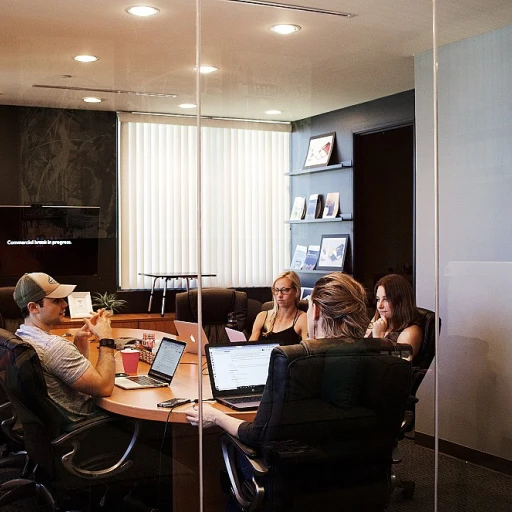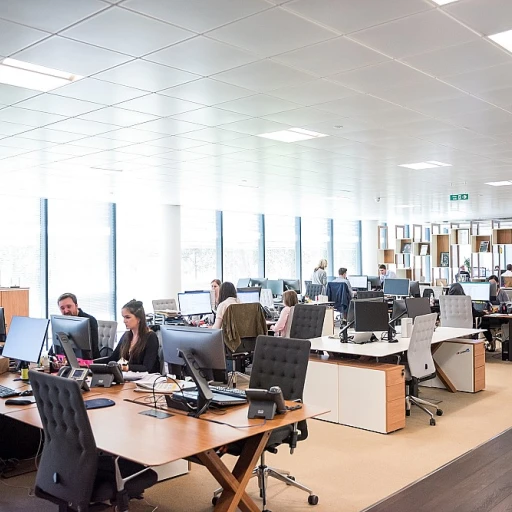
Understanding the Current Office Landscape
Evaluating the Workplace Dynamics
The current office landscape presents a unique set of opportunities and challenges that businesses must navigate to foster productivity and employee satisfaction. Companies in the United Kingdom are increasingly adopting hybrid work models, allowing team members more flexible work arrangements. This adjustment in the work environment is geared towards enhancing the work life balance of employees. To understand how these changes impact daily operations, it is essential to analyze how office layouts contribute to or hinder workplace improvement. Office space should support the diverse needs of employees, offering areas for focused work as well as collaborative spaces for team building. A well-thought-out office design not only boosts employee productivity but also plays a vital role in maintaining employee well-being and mental health. Incorporating check-ins and using the best tools for process improvement are crucial for understanding and meeting the evolving needs of the workforce. These processes help management to streamline business processes and ensure that employees feel supported in their roles. The integration of technology is another critical element in the modern office landscape. By embracing innovative technological solutions, companies can enhance workplace efficiency and adaptability, especially for hybrid work and other flexible arrangements. This entails not only adopting new software development tools and services but also ensuring team members have access to necessary support. Continuous improvement and regular evaluation of the office environment are imperative. Businesses must keep assessing which aspects of their operations align with their goals while also ensuring sustainability in office management practices.Implementing Effective Office Layouts
Designing the Workspace for Enhanced Productivity
Creating an office layout that maximizes productivity and employee satisfaction is an essential aspect of modern office management. As work arrangements and business processes evolve, implementing effective office layouts becomes crucial to improve the work environment. One approach is to optimize the usage of office space by carefully planning the arrangement of desks, meeting rooms, and communal areas. A well-thought-out office design not only provides the best support for team members but also encourages collaboration and communication, crucial to workplace improvement. Flexible work options, such as hybrid work models, require offices to adapt. A mix of open-plan areas and private spaces can help accommodate both teamwork and individual tasks, addressing employees' diverse needs. Meeting rooms should be equipped with the latest tools and technology to enhance communication, making hybrid teams feel connected irrespective of physical location. Furthermore, offering various workstations catering to different tasks can significantly impact productivity and employee satisfaction. Consider work zones that include quiet areas for focused work and vibrant spaces for creative brainstorming and team building. Lastly, regular check-ins and feedback mechanisms involving employees in the office layout process can lead to improvements and continuous enhancement in the workplace. This fosters a sense of belonging and helps employees feel their voices contribute to the business's success while maintaining a balanced work life and supporting mental health. Implementing these strategies requires a structured management process but results in a dynamic workplace that enhances employee well-being and overall business performance.Embracing Technology for Office Efficiency
Transforming the Workplace with Technology
The modern office landscape continues to evolve, demanding innovative approaches to enhance productivity and overall employee satisfaction. To truly embrace transformation in the workplace, it's essential to integrate cutting-edge technology that supports flexible and hybrid work arrangements. With the increasing popularity of hybrid work models, businesses need to offer robust tools and services to facilitate seamless communication and collaboration among team members, regardless of their physical location. Investing in the best software development platforms can significantly streamline processes and improve management efficiency, leading to smoother business operations. Moreover, technology that supports virtual check-ins and team-building activities can help maintain a cohesive and engaged workforce, vital for employee well-being. Video conferencing systems and smart meeting rooms are also crucial for creating effective communication channels in a hybrid environment. By utilizing such technologies, employees feel more connected and empowered, ultimately boosting productivity levels. In addition, implementing process improvement strategies through data-driven insights can bolster business process efficiencies. Leveraging analytics software can identify opportunities for workplace improvement, enabling management to make informed decisions and drive continuous improvement. Integrating technology not only helps support flexible work arrangements but also plays a pivotal role in fostering a positive and dynamic team environment. By prioritizing technology adoption, companies can ensure the health and mental well-being of their employees remain at the forefront of their business strategy, encouraging a balanced work life and improving overall employee satisfaction. Ultimately, embracing technological advancements in office management lays the foundation for a future-ready workspace that is resilient, adaptive, and conducive to both personal and professional growth.Fostering a Positive Work Culture
Creating a Supportive and Engaging Work Environment
In today's dynamic workplace, fostering a positive work culture is crucial for both employee satisfaction and business success. An effective office environment not only improves productivity but also enhances the well-being of employees. The implementation of supportive measures can play a significant role in achieving these objectives. Consider the following strategies to foster a supportive environment within your office:- Flexible Work Arrangements: Allowing hybrid work options can greatly contribute to a positive work environment. This flexibility helps in achieving better work-life balance, reducing stress, and supporting mental health.
- Employee Well-being Programs: Prioritizing health initiatives and mental health support services can significantly impact employee satisfaction. Regular check-ins and the provision of resources focused on mental and physical health are essential.
- Team Building Activities: Organizing team-building activities encourages collaboration and strengthens team dynamics. This not only boosts morale but also fosters a sense of community and belonging.
- Open Communication Channels: Establishing transparent communication channels empowers employees to voice their concerns and suggestions. This can lead to effective process improvements and enhance workplace harmony.
- Recognition and Rewards: Acknowledging and rewarding employee accomplishments boosts their motivation and productivity. Implementing a fair recognition system supports continuous improvement in work performance.
- Optimized Office Space: Designing office layouts that accommodate both collaborative spaces and quiet zones can enhance focus and efficiency. Ensuring that meeting rooms and communal areas are conducive to productivity is key.
Sustainability in Office Management
Integrating Environmental Practices in Workplace Management
In today’s rapidly changing business environment, incorporating sustainable practices into office management is not only essential for environmental health, but it also benefits employee satisfaction and overall productivity. Sustainable work environments can drive a positive work culture, making employees feel more valued and motivated.
Employers can achieve these goals by implementing various strategies. Considerations might include leveraging flexible work arrangements, effectively utilizing office space, and investing in energy-efficient resources. Collaborative tools and equipment designed for a hybrid work schedule can maximize team engagement and reduce the need for constant commute, promoting a better life balance.
Smart Investments in Sustainable Resources
By incorporating eco-friendly practices such as energy-saving lighting, recycling programs, and sustainable office furniture, companies create an environment that supports work life equilibrium. Moreover, using digital tools and software solutions that support workplace improvement can decrease unnecessary paperwork and streamline the business process.
Introducing plants and natural lighting in the work environment can boost employee well-being, foster creative thinking, and enhance overall productivity. These sustainable practices not only help in reducing costs over time but also play a crucial role in supporting the mental health of employees. Regular check ins and feedback from team members can ensure these methods are customized to meet the needs of the office.
Continuous Evaluation for Lasting Improvement
Incorporating sustainability requires ongoing process improvement and evaluation. Regular audits of these efforts can identify areas for enhancement and track success. Collaborative team building sessions can encourage employees to share ideas on further sustainability initiatives. This engagement increases awareness and ownership, fueling continuous improvement across the workplace.
Sustainable office management goes beyond immediate improvements; it entails a continued commitment to making thoughtful choices that benefit the business and its employees. By aligning with green goals, companies can provide support and services that lead the industry towards a better work future.
Measuring Success and Continuous Improvement
Key Metrics for Evaluating Office Success
To measure the success of the office environment, businesses must establish clear metrics that assess productivity, employee satisfaction, and overall workplace improvement. Regular check-ins with employees can provide insights into their work life balance and the effective use of hybrid work models.
Enhancing Employee Satisfaction for Better Performance
Businesses that prioritize employee well-being through flexible work arrangements and a supportive work environment tend to see a significant boost in productivity. This can be achieved by fostering team building in meeting rooms and creating an office space where team members feel valued and supported.
Continuous Improvement in Workflow and Management
By embracing the continuous improvement ethos found in software development, companies can streamline business processes and enhance management strategies. Implementing tools and services that facilitate process improvement can optimize time management and support hybrid work arrangements effectively.
Utilizing Technology for Enhanced Workplace Efficiency
Leveraging the latest technology, offices can improve the health and flexibility of the workplace. The adoption of the right office tools can help businesses achieve the best results in productivity and process management, enabling team members to thrive in a hybrid work environment.
Ensuring Mental Health and Employee Engagement
Recognizing the importance of mental health, businesses should develop programs that monitor and improve employee satisfaction and engagement. This focus helps create a work environment that not only meets but exceeds the expectations of the modern workforce, ensuring sustainable growth and support for every employee.













